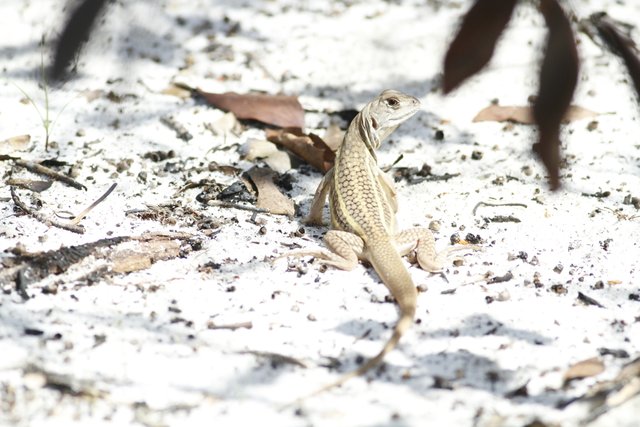Amazing Nature #96 - Fabulous self-cloning lizard
Today I bring you a fascinating animal that will leave you astonished with its particularities, as it is to be expected it is a reptile these animals do not cease to amaze me, many of them are studied due to their regenerative capacities the scientists hope to be able to find some significant help that is applicable in the case of the humans. I am talking about the self-cloning lizard. Come with me to learn a little about this incredible creature.

its scientific name Leiolepis ngovantrii is a lizard whose star characteristic is that it can be reproduced by a phenomenon called parthenogenesis, this means that it does not exactly require that there be a reproduction, any lizard of this species can reproduce another specimen identically with all the genetic information.

It was in 2010 when Vietnamese scientists discovered this rare species, and it was a little strange their discovery, was in a restaurant where they serve them as a traditional dish, the scientists realized that they were all identical so they decided to start researching them thoroughly to know more about them.

They are endemic to Vietnam from a locality called Binh Chau-Phuoc Buu, district of Xuyen Moc, the characteristic of this area is coastal where dunes abound and some places with little vegetation which makes it a special habitat for the development of this reptile.

As mentioned do not have to reproduce as other species of lizards normally do, the difference is that the self-cloning lizard reproduce by parthenogenesis, bone the lizard is capable of producing another specimen completely identical to the same, there are only females there is no male, this means that the process happens thanks to the females produce female sex cells not fertilized.

Parthenogenesis remains a mystery in the scientific field dedicated to the study of evolution, the best-known theory says that parthenogenesis is possible thanks to a bacterium called Wolbachia an organism that is able to be introduced into DNA by modifying its structure to be able to reproduce in these terms.

They have scaled a maximum of 9 rows in their forearms and 40 at most and under their fourth finger have 40 sheets, many uncertainties there are about the survival of this species because they do not present changes in their genes, making the new generations are more prone to perish not having updated information necessary to combat the changes that occur in the environment.

In short, the lizard is able to make evolutionary changes thanks to the mutations they present, they are active during the day preferring the first rays of the sun which they occupy to hunt, the rest of the time they occupy building deep tunnels to shelter from temperature changes and their main predators.

Its main threat is indiscriminate hunting because it is consumed as a succulent dish in some popular Vietnamese restaurants, eat them because they believe they have aphrodisiac powers and have regenerative powers.

I think it is great that they continue studying this species because it can mean a very precious advance for human health, I think it is too bad that they use their meat to eat it, these practices should be penalized in countries where they allow valuable and exotic species to kill them for consumption, the damage to the species has led to many disappearing and in other cases are threatened to disappear forcibly.
Thank you for reading


If you liked reading this article, feel free to FOLLOW ME, UPVOTE and RESTEEM! It's always appreciated =D. Thank you all for your support and see you soon for the news flamingirl's adventures!


@flamingirl,
Truly astonishing critter! I live in the Southeastern Arizona desert only 6 miles from the US/Mexico border and we have a great deal of reptiles. Some of them make their way indoors occasionally and help me with the never ending march of bugs that find a way in.
This was a fascinating article! Thanks for sharing!
@Lymmerik
fascinating creatures !! the closest thing to pre-history dinosaurs